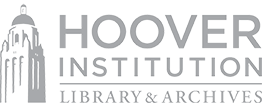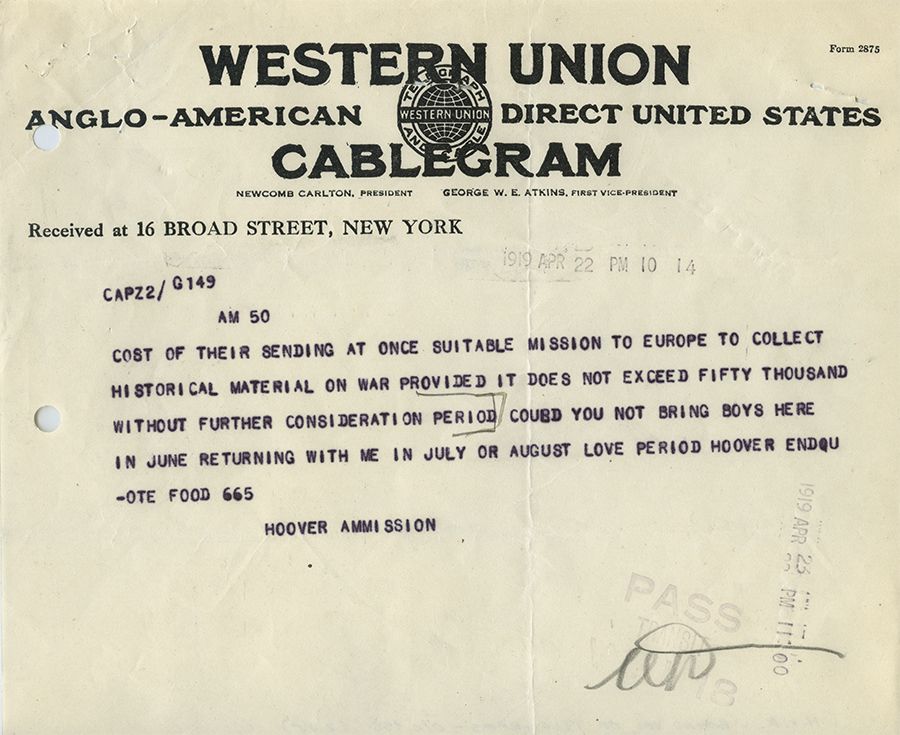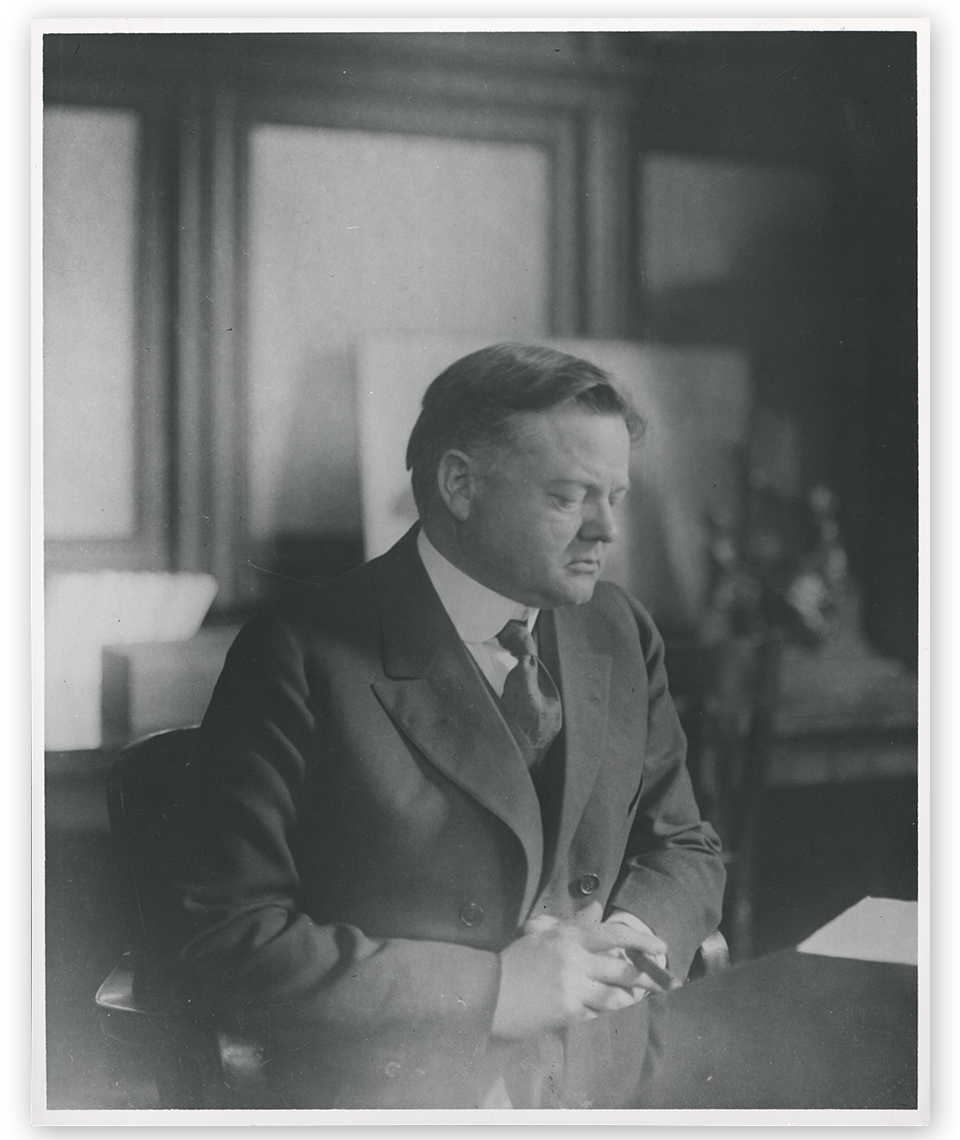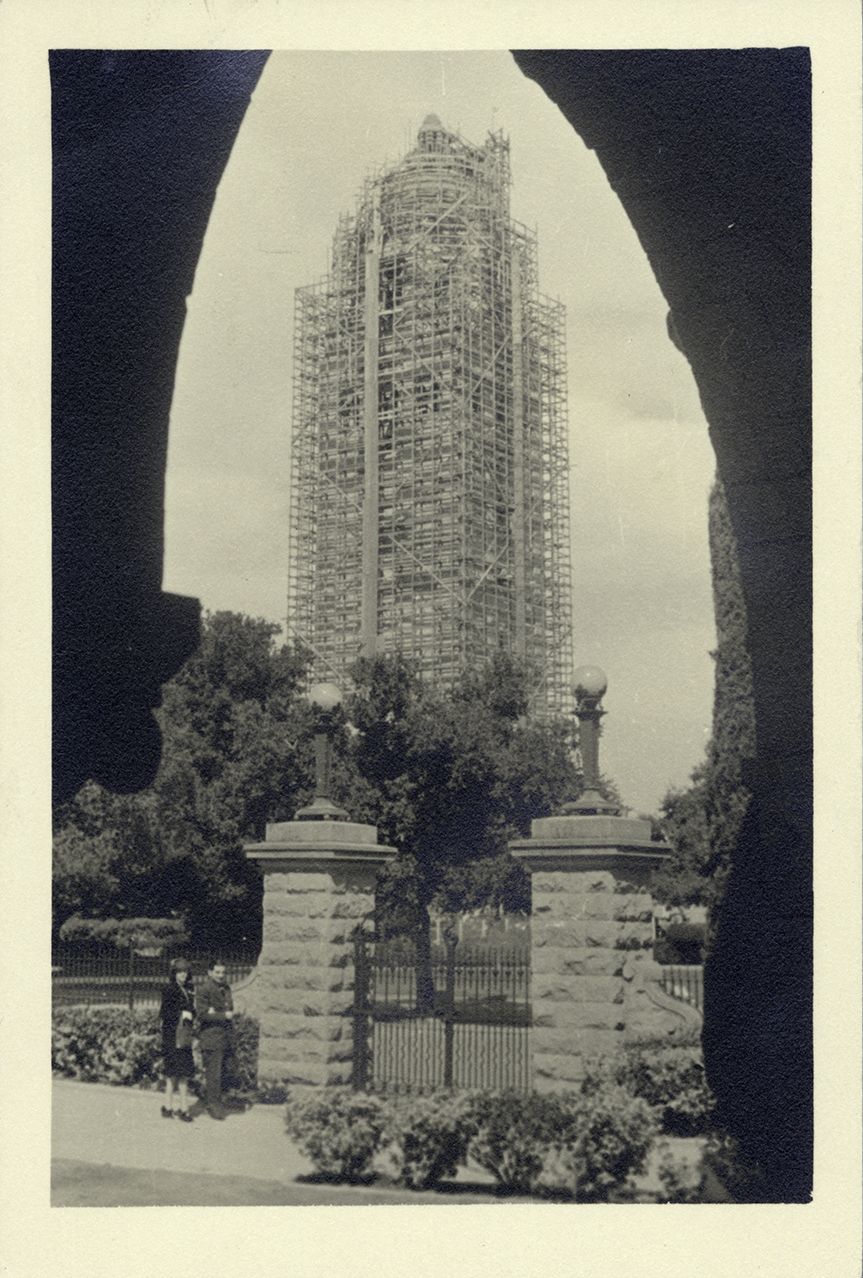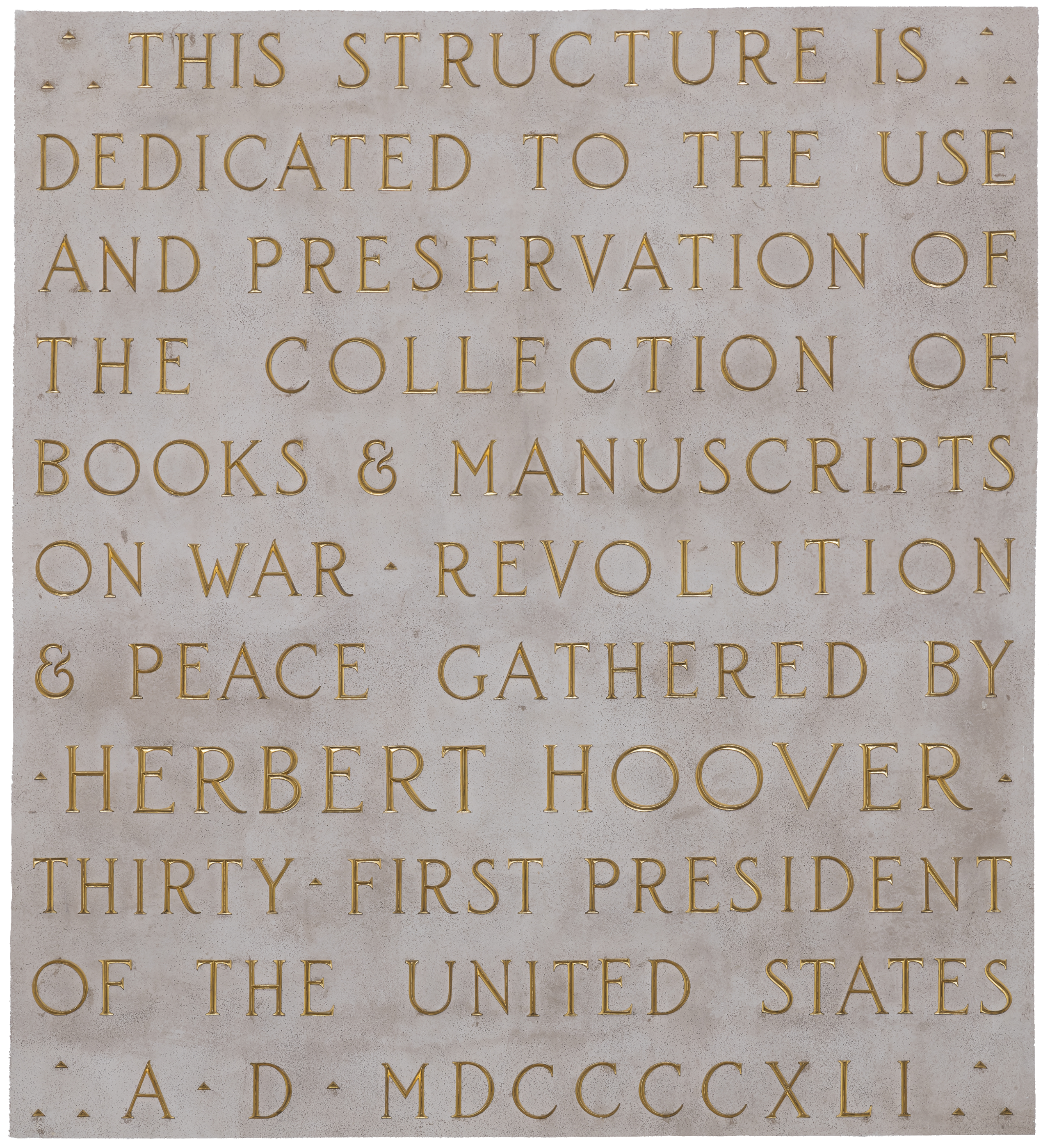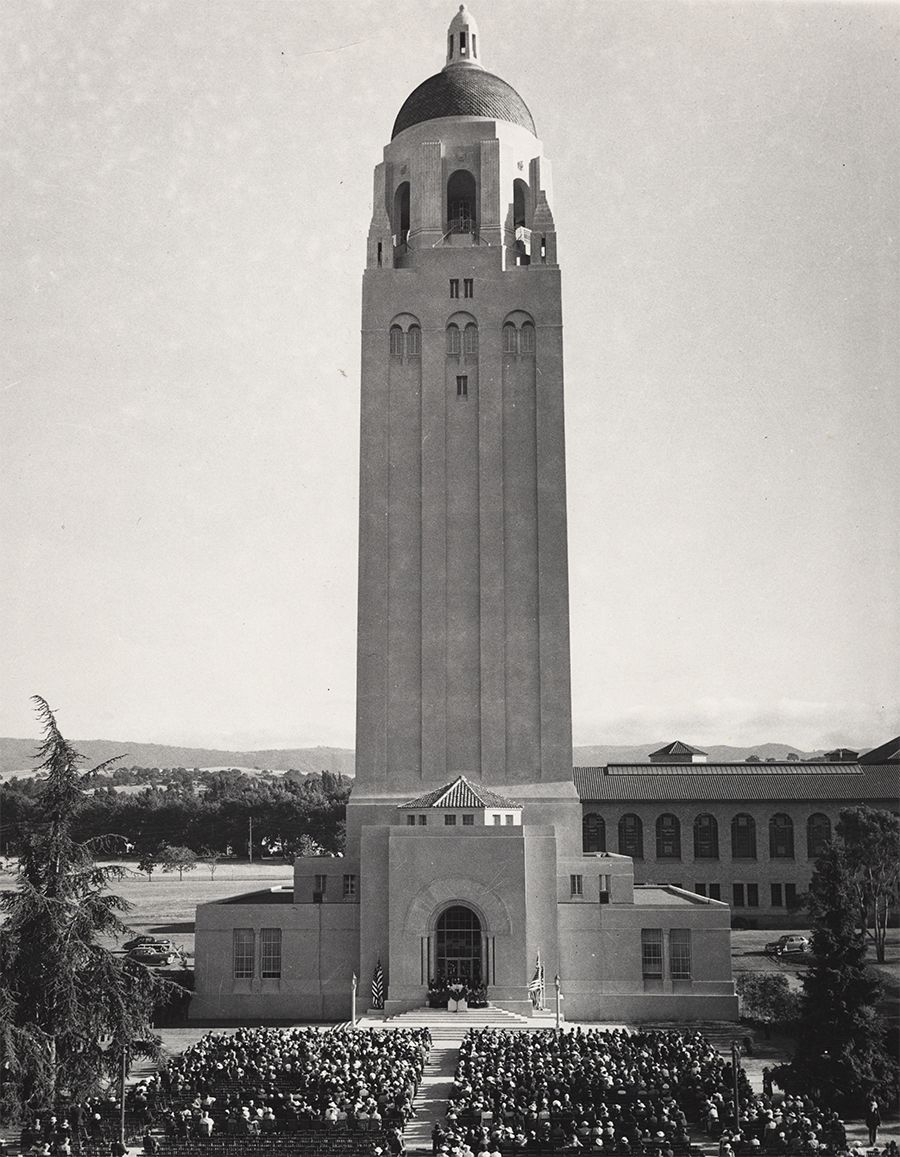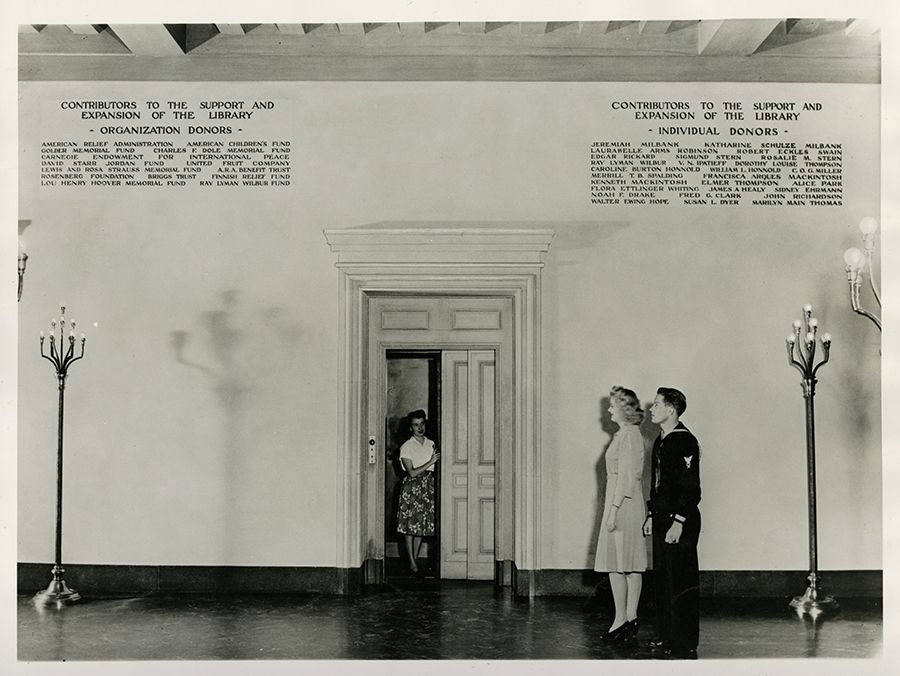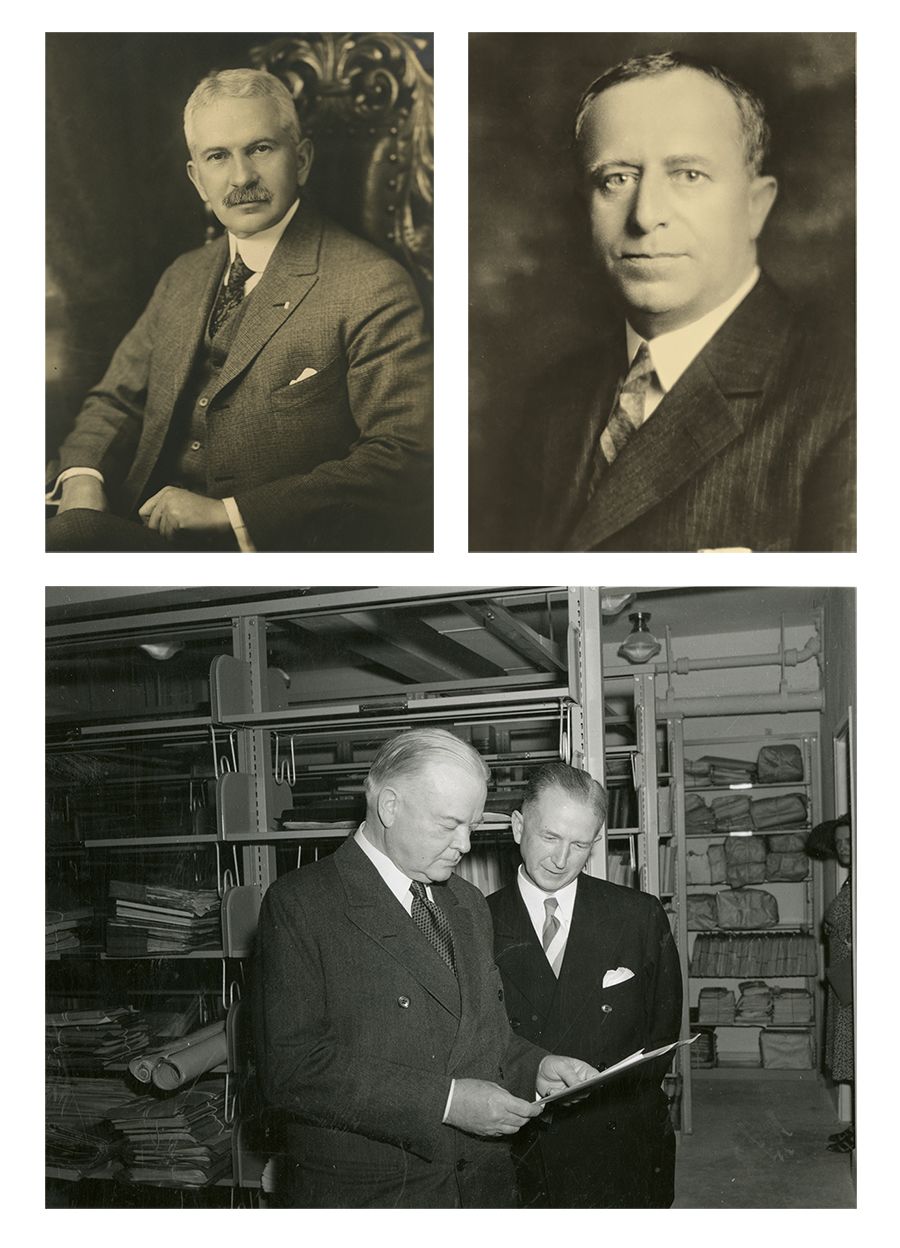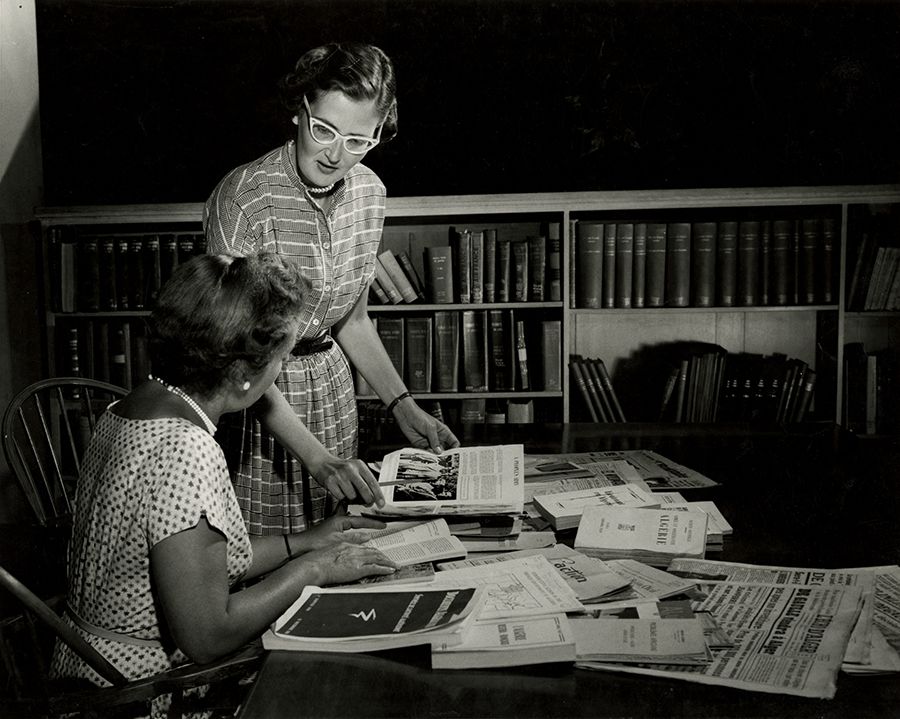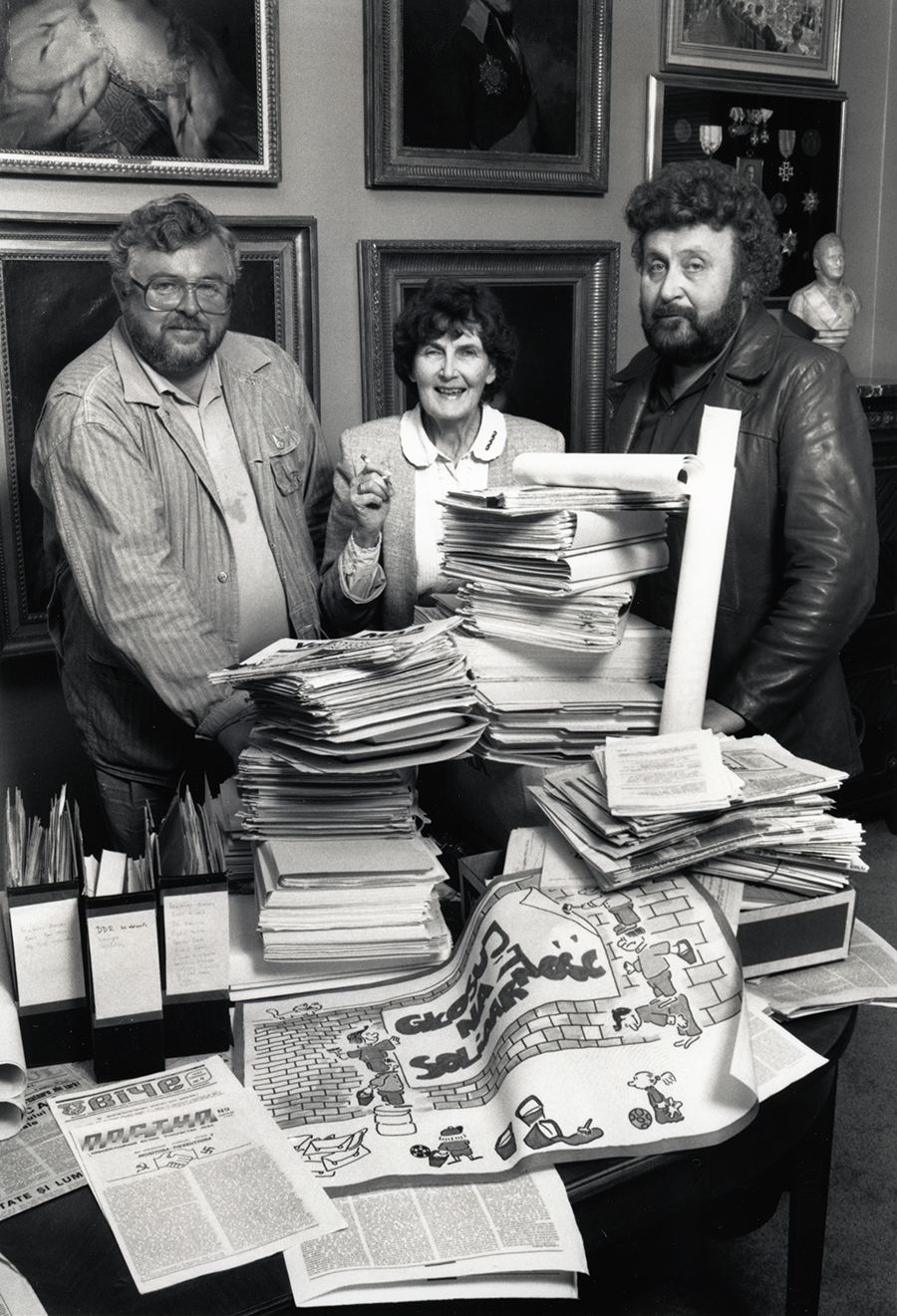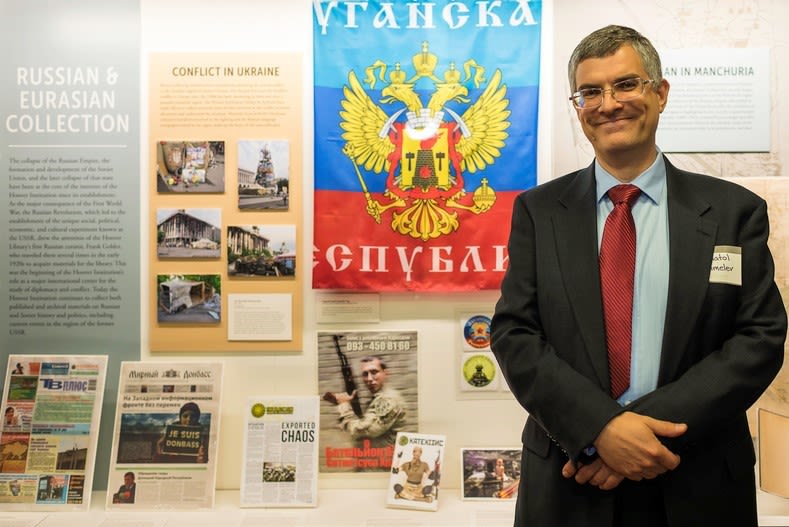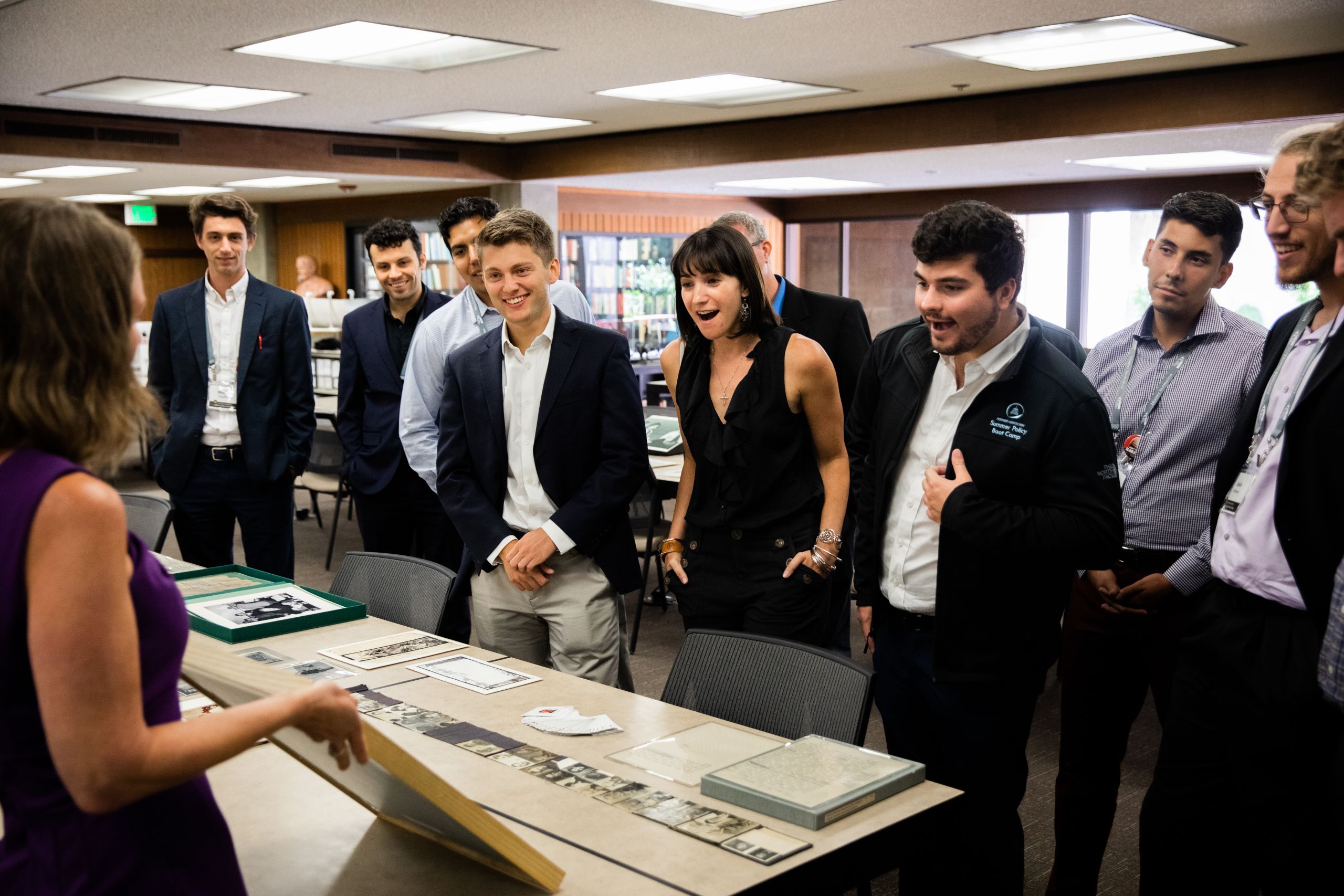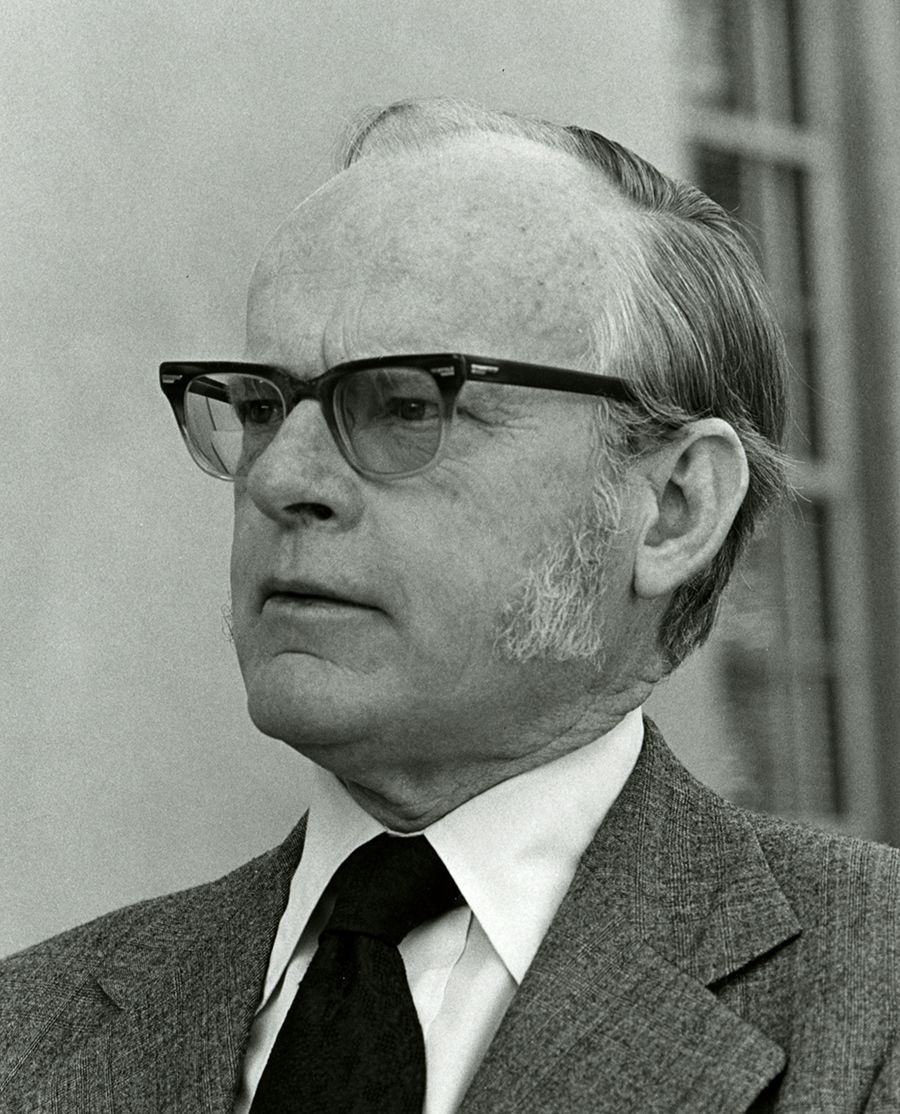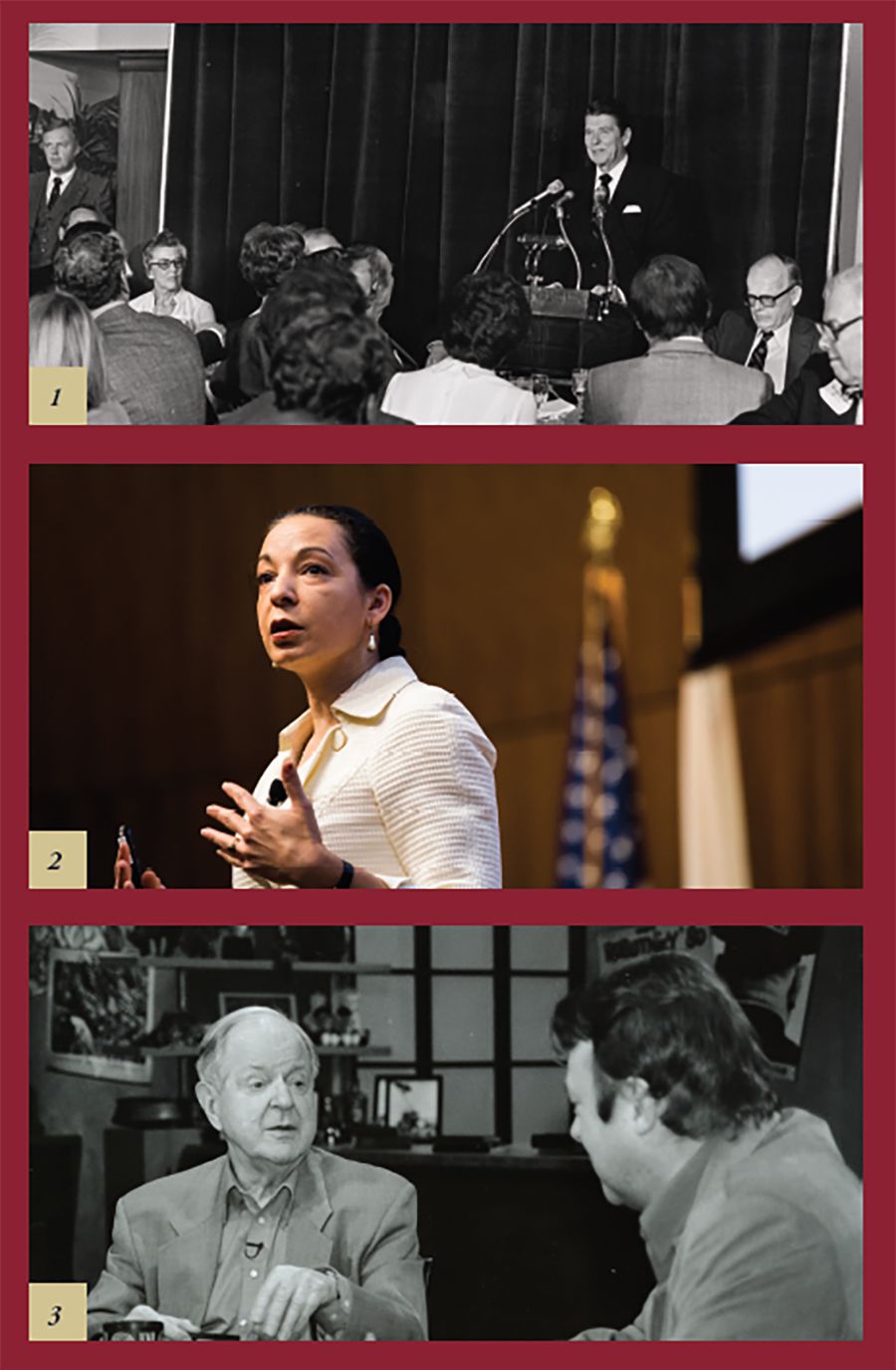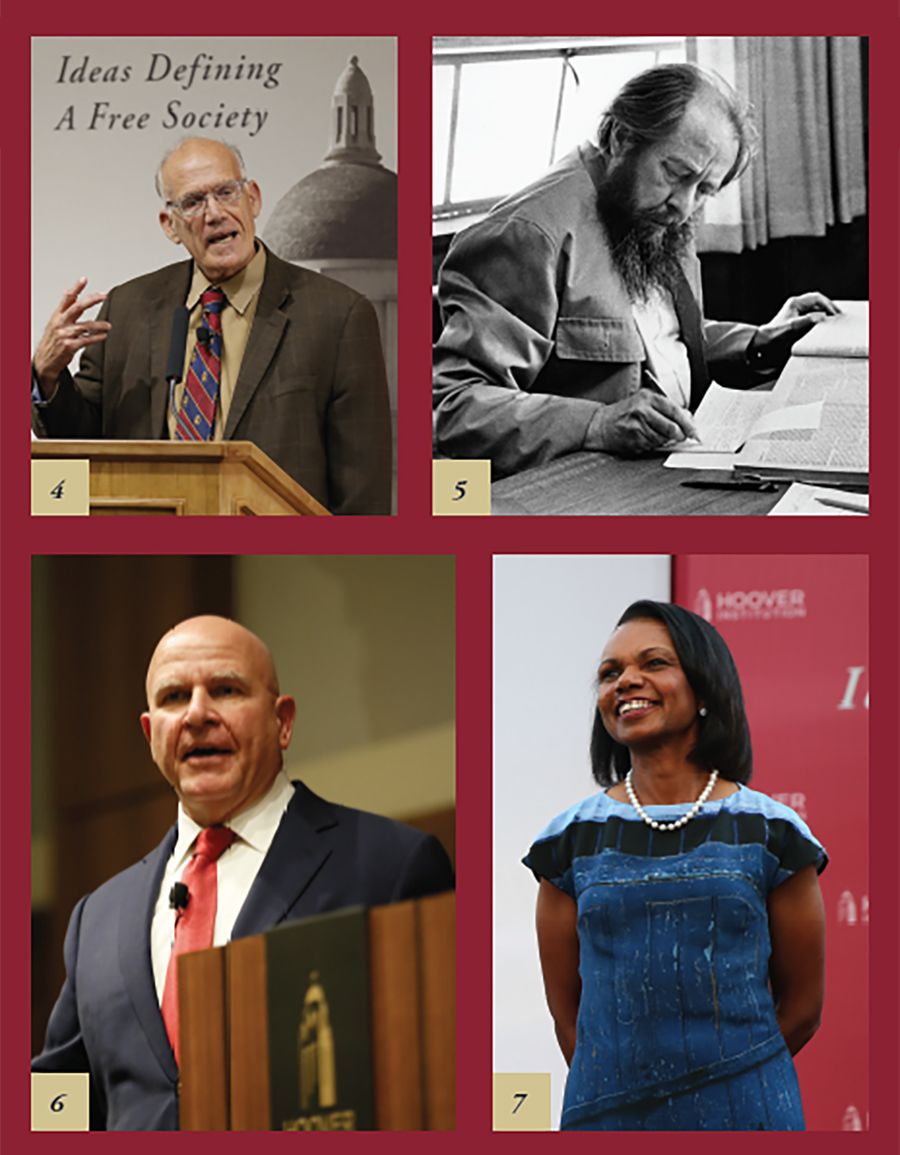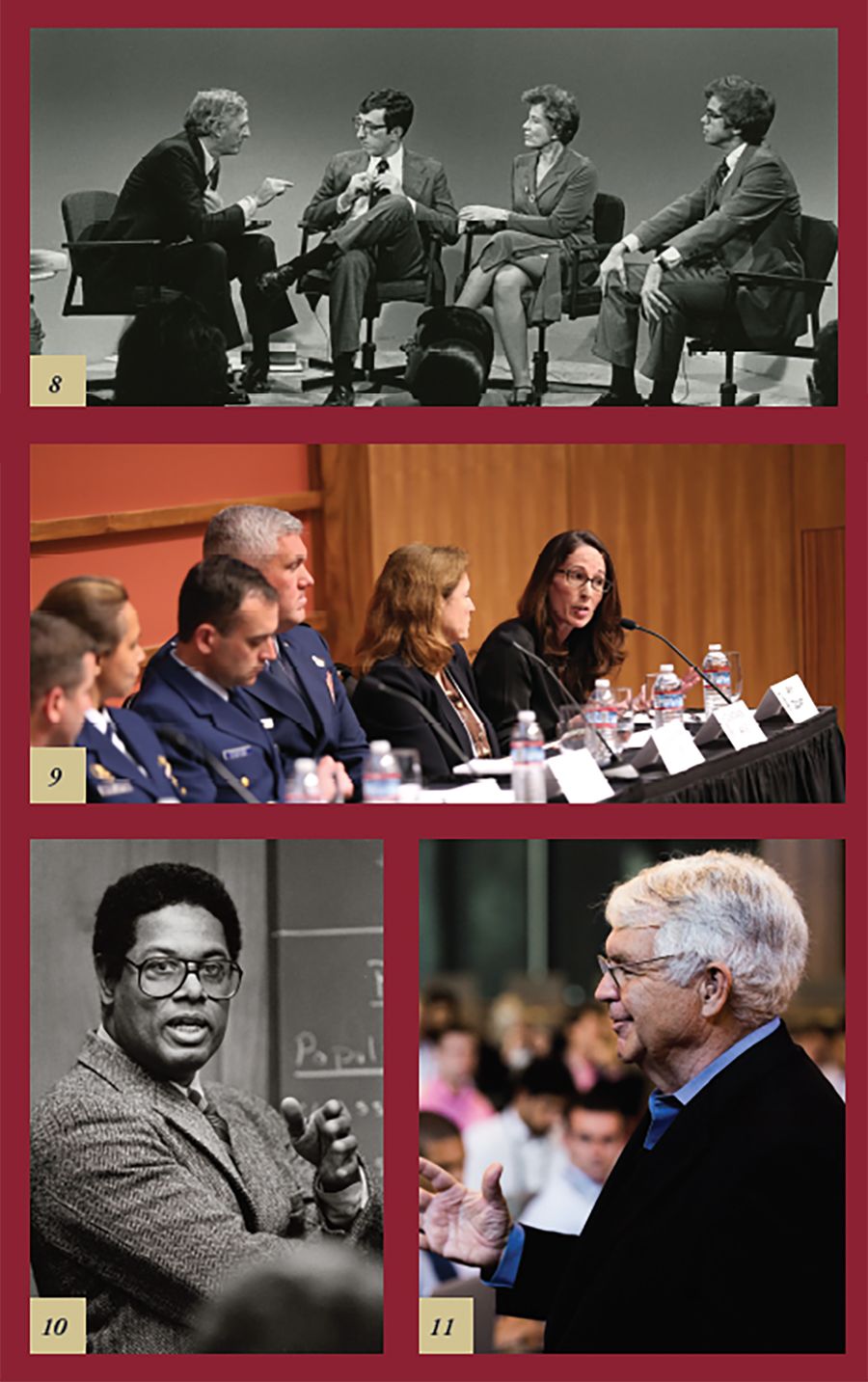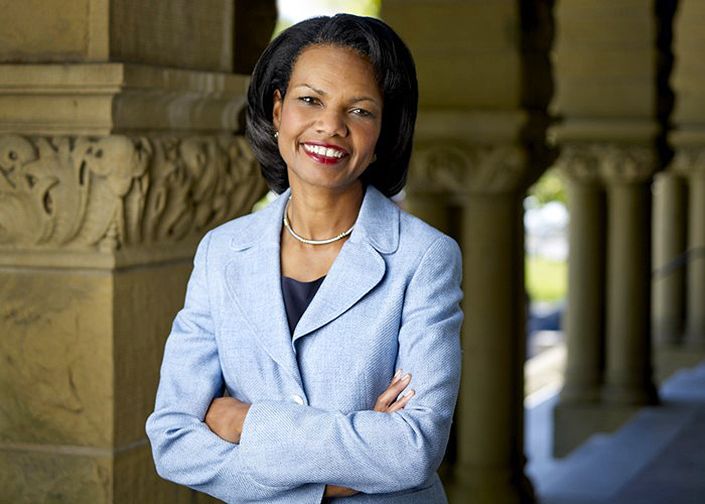The Hoover Institution
Yesterday | Today | Tomorrow
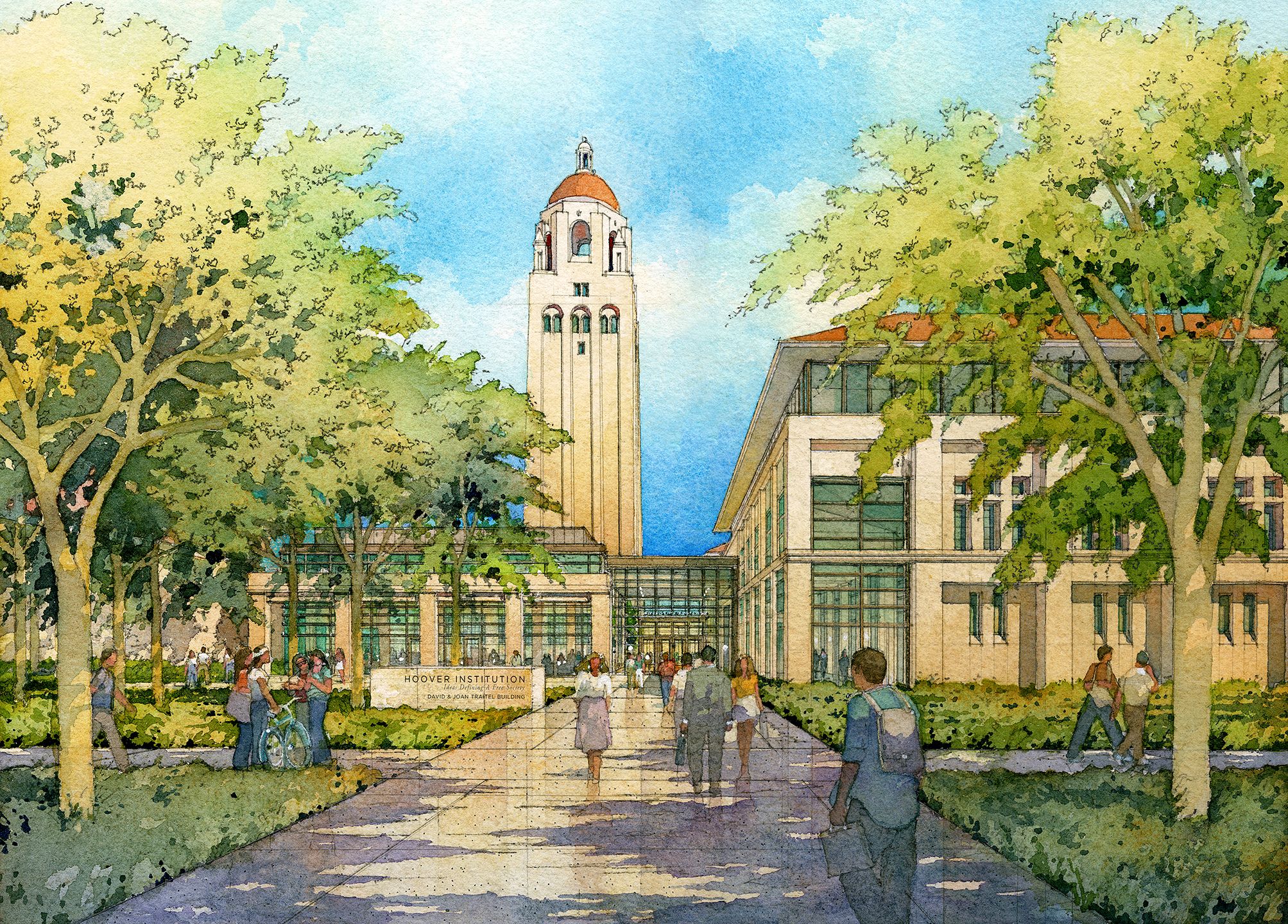
The Hoover Institution advances the principles of freedom through the wide-ranging policy scholarship of an interdisciplinary group of Hoover fellows and through access to one of the greatest library and archival collections on war, revolution, and peace assembled in the modern era.
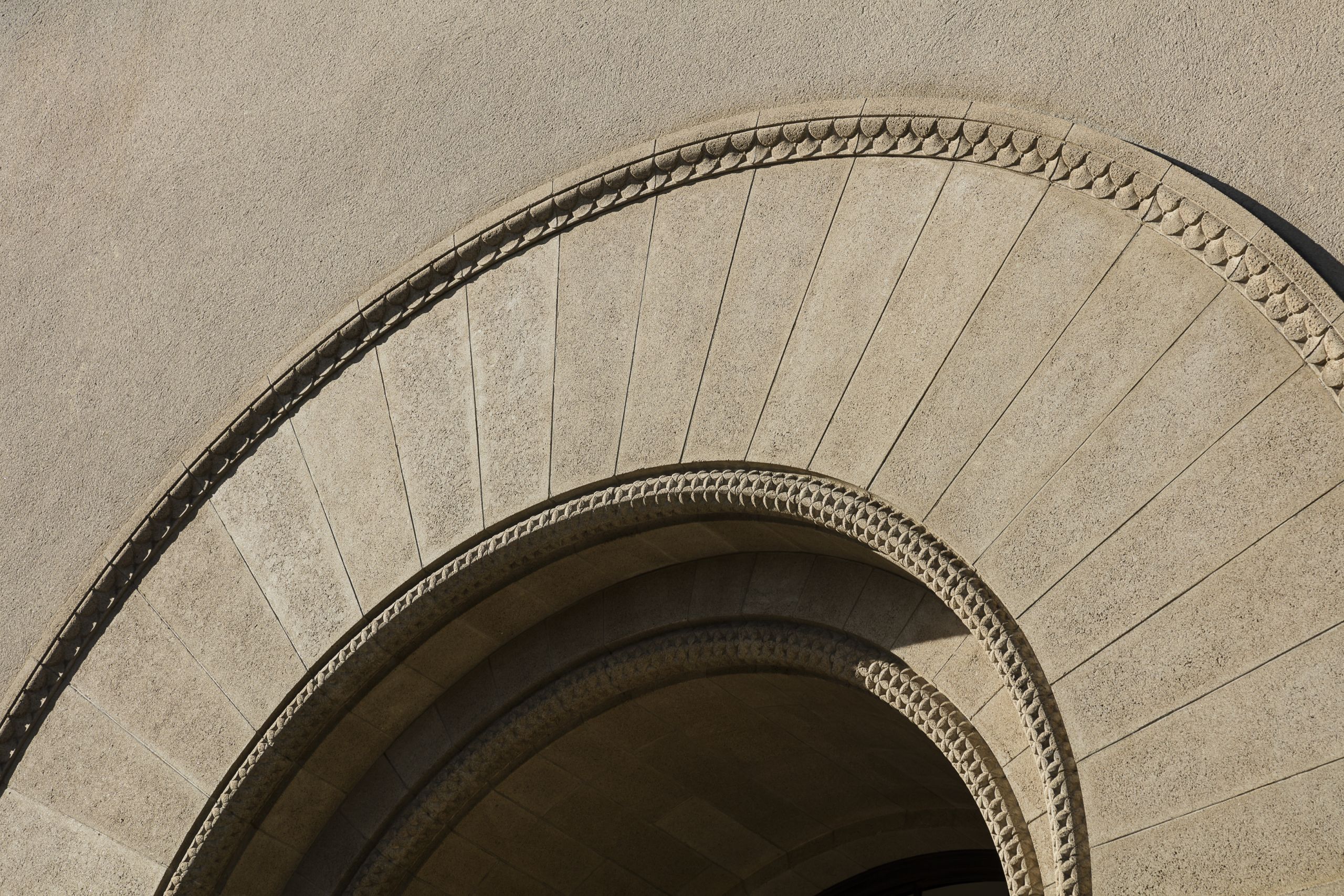
1919 Origins
The Hoover War Collection
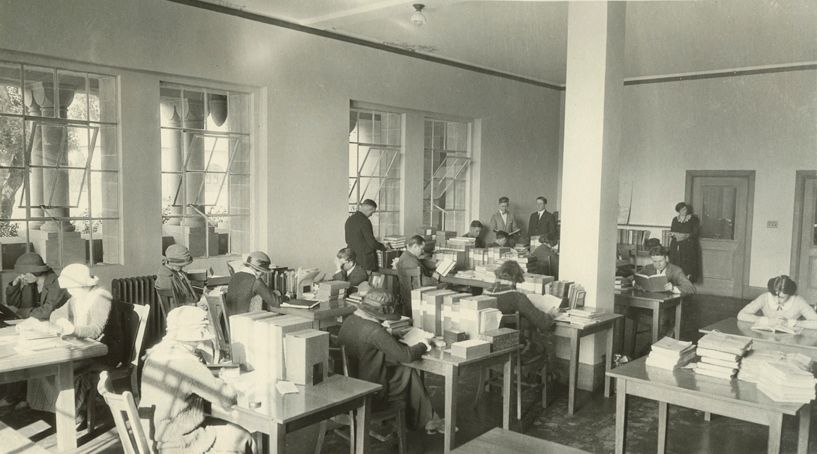
"There will be a thousand years to catalogue this library but only ten years in which to acquire the most valuable of material." –Herbert Hoover to Ray Lyman Wilbur, 1924
Herbert Hoover began his collection of rare historical artifacts decades before public and university libraries became interested in such material. Through his personal initiative and this talent for entrusting responsibility to the right people, Hoover assembled one of the world’s largest and most comprehensive private libraries and archives on twentieth-century history.
On April 22, 1919, Herbert Hoover sent his wife, Lou Henry, a telegram stating that if Stanford history professor E. D. Adams and President Ray Lyman Wilbur kept it confidential, he would allot $50,000 to underwrite a “mission to Europe to collect historical material on war.”
Page 2 of the telegram that Herbert Hoover sent to his wife with the idea of having Stanford professors go to Europe to collect material on the war, April 22, 1919. Hoover Institution on War, Revolution and Peace Records, Hoover Institution Archives
Page 2 of the telegram that Herbert Hoover sent to his wife with the idea of having Stanford professors go to Europe to collect material on the war, April 22, 1919. Hoover Institution on War, Revolution and Peace Records, Hoover Institution Archives
The Hoover War Collection, as it was initially called, rapidly expanded its collecting scope to include not just the causes and course of the First World War but its tumultuous aftermath. Within a few years, the collection became a library dedicated to documenting war, revolution, and peace in the modern era. The search for peace—that is, for a way to prevent a recurrence of war and the revolutions that inevitably spring from it—was at the heart of Herbert Hoover’s project.
Herbert Hoover, US Food Administrator, circa 1918. Herbert Hoover Subject Collection, Hoover Institution Archives
Herbert Hoover, US Food Administrator, circa 1918. Herbert Hoover Subject Collection, Hoover Institution Archives
Hoover Tower
Reaching New Heights

By 1929 the Hoover War Library had accumulated material at such a rapid pace that the need for a separate building to house the collection had become acute. The Hoover Tower was designed by Arthur Brown Jr., of the firm Bakewell and Brown, who designed the Cecil H. Green Library and several other buildings on campus, as well as San Francisco’s City Hall and Coit Tower.
Hoover Tower was originally designed to have a reading room on the top floor. However, in May 1939, three months prior to groundbreaking, Herbert Hoover was offered a set of carillon bells originally made for the Belgian pavilion at the 1939 World’s Fair. Brown redesigned the tower to accommodate an eighteen-thousand-pound carillon and moved the reading room to the first floor. Construction of the 285-foot-tall Hoover Tower was finished in 1941, Stanford University’s fiftieth anniversary.
Painted dedication inside of Hoover Tower, photograph by Tim Griffith.
Painted dedication inside of Hoover Tower, photograph by Tim Griffith.
In October 1943, due to popular demand, the observation platform of Hoover Tower was opened to campus visitors seeking to take in the panoramic view of the Bay Area. Within the first year, more than 3,500 people took the elevator ride to the top of the tower. In 1945 the total number of visitors rose to 15,000, and by 1950 that number had nearly doubled. Today the annual number of visitors to the Hoover Tower’s observation platform exceeds 125,000.
Visitors about to board the elevator to the Tower observation deck, circa 1943. Hoover Institution on War, Revolution and Peace Records, Hoover Institution Archives
Visitors about to board the elevator to the Tower observation deck, circa 1943. Hoover Institution on War, Revolution and Peace Records, Hoover Institution Archives
Hoover Tower blueprint, circa 1937. Hoover Institution on War, Revolution and Peace Records, Hoover Institution Archives
Hoover Tower blueprint, circa 1937. Hoover Institution on War, Revolution and Peace Records, Hoover Institution Archives
Construction of Hoover Tower, circa 1940. Hoover Institution on War, Revolution and Peace Records, Hoover Institution Archives
Construction of Hoover Tower, circa 1940. Hoover Institution on War, Revolution and Peace Records, Hoover Institution Archives
Rotunda Inscription, Hoover Tower, photograph by Tim Griffith.
Rotunda Inscription, Hoover Tower, photograph by Tim Griffith.
Dedication ceremony, Hoover Tower, June 20, 1941. Hoover Institution on War, Revolution and Peace Records, Hoover Institution Archives
Dedication ceremony, Hoover Tower, June 20, 1941. Hoover Institution on War, Revolution and Peace Records, Hoover Institution Archives
Library & Archives
Collect, Preserve, Engage

Professors E. D. Adams, Ralph Lutz, and Frank Golder pioneered the curation of Hoover’s collection and traveled to Europe repeatedly during the 1920s to collect documents, rare books, posters, diaries, government publications, and other materials for the library. Their work laid the foundations of the Hoover Institution’s unparalleled collections on Central and Eastern Europe and Russia.
The mission of the Library & Archives grew during World War II from a Europe-oriented undertaking to one encompassing the entire globe. Collecting practices were accordingly divided into various geographic areas, with each area assigned a curator with subject matter expertise.
Mrs. Peterson and Mrs. Godsall discussing the Hoover Library's current acquisitions concerning North Africa, 1950s. Hoover Institution on War, Revolution and Peace Records, Hoover Institution Archives
Mrs. Peterson and Mrs. Godsall discussing the Hoover Library's current acquisitions concerning North Africa, 1950s. Hoover Institution on War, Revolution and Peace Records, Hoover Institution Archives
Today, curators continue to build the collection and engage with the scholarly and general community through publications, workshops, and classes. The Library & Archives now holds nearly one million library volumes and more than six thousand archival collections from more than 170 countries.
Curator Anatol Shmelev with newly acquired collection materials, 2017.
Curator Anatol Shmelev with newly acquired collection materials, 2017.
The mission to acquire, preserve, and make available to researchers the most important materials pertaining to war, revolution, and peace, and to document political, social, and economic change continues at the Library & Archives today. Its resources and programs support a vibrant international community of scholars and a broad public interested in the meaning and role of history.
Curator Jean McElwee Cannon introducing workshop participants to collections in the reading room, August 2019. Photo: Patrick Beaudouin
Curator Jean McElwee Cannon introducing workshop participants to collections in the reading room, August 2019. Photo: Patrick Beaudouin
Top: Ephraim Adams (left) and Frank Golder (right); Bottom: Herbert Hoover with Ralph Lutz. Hoover Institution on War, Revolution and Peace Records, Hoover Institution Archives
Top: Ephraim Adams (left) and Frank Golder (right); Bottom: Herbert Hoover with Ralph Lutz. Hoover Institution on War, Revolution and Peace Records, Hoover Institution Archives
Curators Maciej Siekierski, Agnes F. Peterson, and Joe Dwyer with new acquisitions, circa 1990. Hoover Institution on War, Revolution and Peace Records, Hoover Institution Archives
Curators Maciej Siekierski, Agnes F. Peterson, and Joe Dwyer with new acquisitions, circa 1990. Hoover Institution on War, Revolution and Peace Records, Hoover Institution Archives
Library & Archives Reading Room, 2016. Photo: Tim Griffith
Library & Archives Reading Room, 2016. Photo: Tim Griffith
Fellows & Policy Research
Scholarship At Its Core
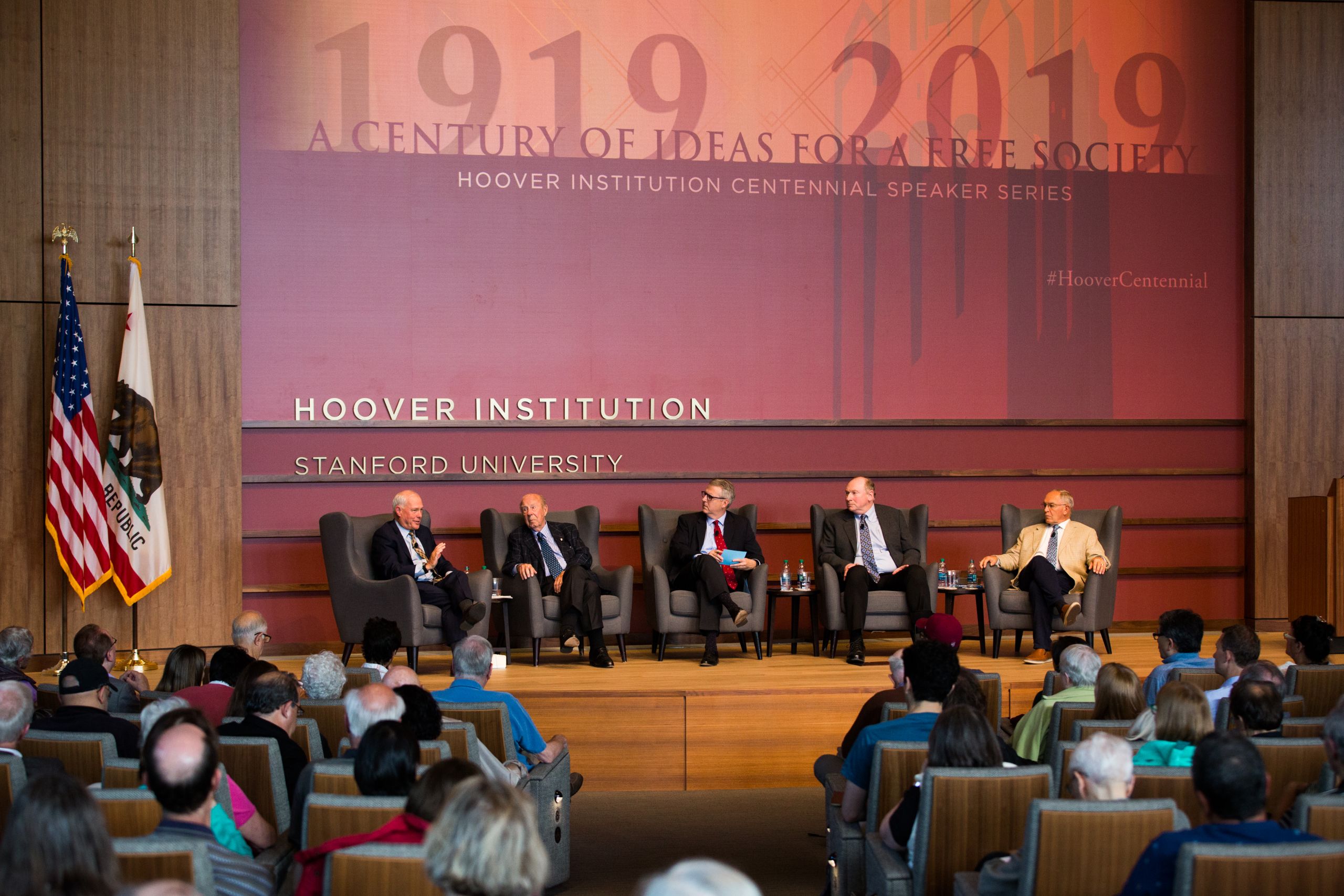
The year 1959 was the most significant in the history of the Hoover Institution since its founding in 1919. It was the year that Herbert Hoover redefined his institution, expanding it beyond a special-collections research library on war, revolution, and peace to become a center for advanced study focused on public policy. By initiating a fellowship program, W. Glenn Campbell, director of the Hoover Institution from 1960 to 1989, was the most influential figure in executing Herbert Hoover’s new vision for the institution.
W. Glenn Campbell while director of the Hoover Institution, n.d. Hoover Institution on War, Revolution and Peace Records, Hoover Institution Archives
W. Glenn Campbell while director of the Hoover Institution, n.d. Hoover Institution on War, Revolution and Peace Records, Hoover Institution Archives
An interdisciplinary group of humanists, social and political scientists, and natural scientists, Hoover fellows study a variety of topics including economics, politics, foreign affairs, education, and history. Fellows have both academic and practical experience, whether at Stanford or other top universities, serving at the highest levels of government, or leading ventures in the private sector.
In economics, Hoover fellows study the principles and practice of free markets, as well as policy issues such as regulation, monetary policy, and public finance. In politics, Hoover fellows focus not only on the democratic institutions but also on the rule of law and federalism. In the field of national security, Hoover fellows study subjects such as cybersecurity, nuclear arms proliferation, and terrorism.
1. Ronald Reagan (1911–2004), Honorary Fellow; 2. Caroline Hoxby, Senior Fellow; 3. Robert Conquest (1917–2015), Research Fellow.
1. Ronald Reagan (1911–2004), Honorary Fellow; 2. Caroline Hoxby, Senior Fellow; 3. Robert Conquest (1917–2015), Research Fellow.
4. Victor Davis Hanson, Senior Fellow; 5. Alexander Solzhenitsyn (1918–2008), Honorary Fellow; 6. H. R. McMaster, Senior Fellow; 7. Condoleezza Rice, Senior Fellow.
4. Victor Davis Hanson, Senior Fellow; 5. Alexander Solzhenitsyn (1918–2008), Honorary Fellow; 6. H. R. McMaster, Senior Fellow; 7. Condoleezza Rice, Senior Fellow.
8. Alvin Rabushka, Senior Fellow, Emeritus; Rita Ricardo-Campbell (1920–2016), Senior Fellow; Martin Anderson (1936–2015), Senior Fellow; 9. Amy Zegart, Senior Fellow; 10. Thomas Sowell, Senior Fellow; 11. John Taylor, Senior Fellow.
8. Alvin Rabushka, Senior Fellow, Emeritus; Rita Ricardo-Campbell (1920–2016), Senior Fellow; Martin Anderson (1936–2015), Senior Fellow; 9. Amy Zegart, Senior Fellow; 10. Thomas Sowell, Senior Fellow; 11. John Taylor, Senior Fellow.
Hoover Today
A 21st Century Institution
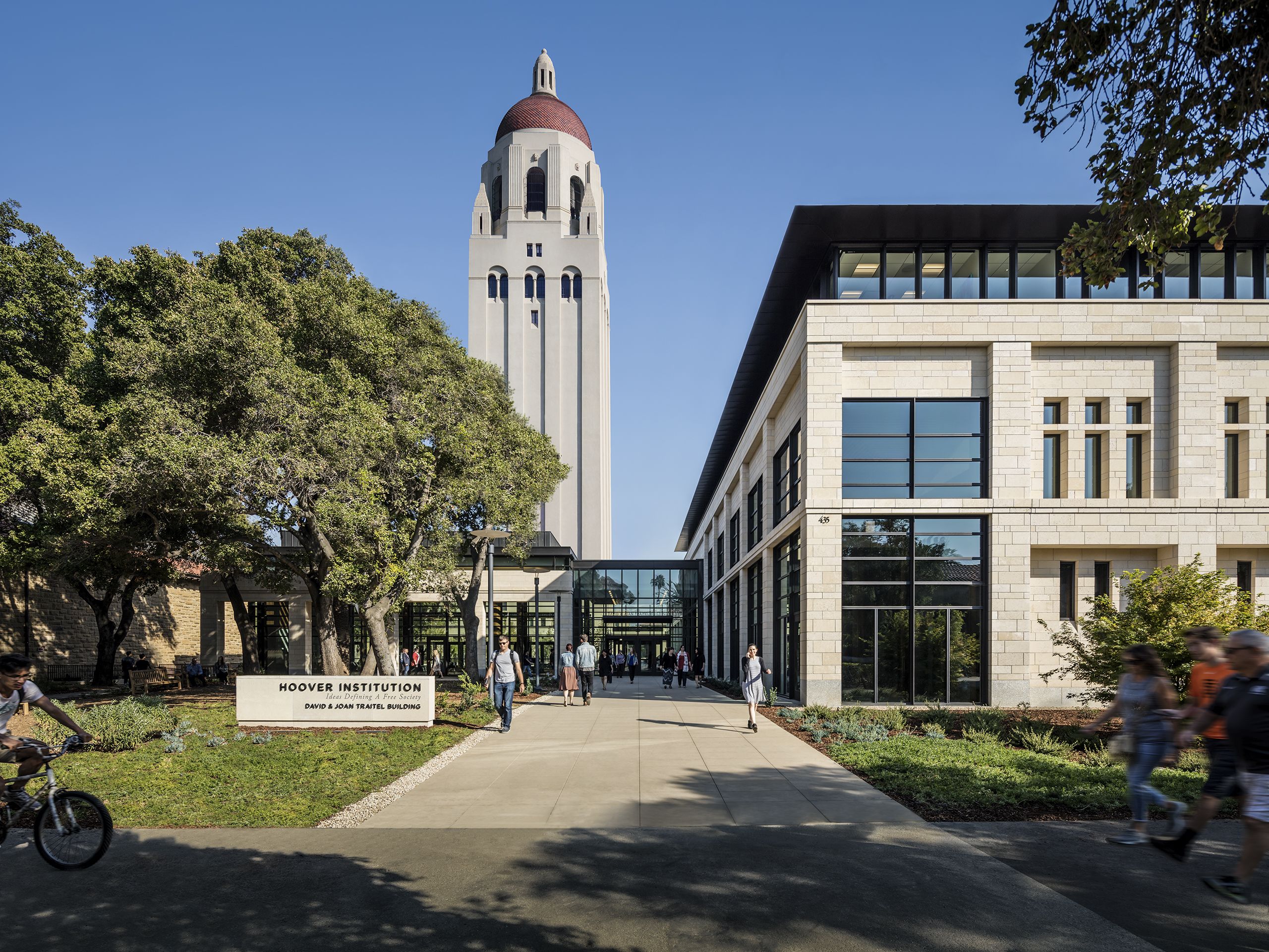
The Hoover Institution is the nation’s preeminent research center dedicated to generating policy ideas that promote economic prosperity, national security, and democratic governance. Throughout the last century, the work of the institution has directly led to policies that have produced greater freedom, democracy, and opportunity in the United States and the world.
Branch office of the Hoover Institution in Washington, D.C.
Branch office of the Hoover Institution in Washington, D.C.
Entering its second century, the Hoover Institution continues to reinforce its strengths in research and education and accelerate the pace of innovation to extend its reach and impact. The institution is building a fellowship and collections to focus on the challenges and opportunities of the future. Fellows are generating ideas that will improve the human condition; education programs are engaging new audiences; and collections are serving as an accessible platform for ever more scholars.
As the twenty-first century unfolds, the Hoover Institution continues to focus on issues of liberty, prosperity, and peace.
Condoleezza Rice, the new director of the Hoover Institution. Photo: Steve Gladfelter
Condoleezza Rice, the new director of the Hoover Institution. Photo: Steve Gladfelter
The Hoover Institution Library & Archives wishes to receive notifications of alleged copyright infringement on this website. If you are a rights holder and believe that our inclusion of certain material on this website violates your rights, please contact: https://www.hoover.org/library-archives/collections/get-help/rights-and-permissions
© 2022 by the Board of Trustees of Leland Stanford Junior University.
